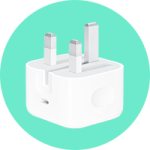Finasteride is a medication widely prescribed for the treatment of hair loss (androgenetic alopecia) in men and benign prostatic hyperplasia (BPH), a condition characterized by an enlarged prostate. Understanding the proper directions for its use is essential for achieving optimal results while minimizing potential side effects.
What is Finasteride?
Finasteride belongs to a class of medications known as 5-alpha-reductase inhibitors. It works by blocking the conversion of testosterone into dihydrotestosterone (DHT), a hormone that contributes to both hair loss and prostate enlargement. By reducing DHT levels, finasteride can help promote hair regrowth in men experiencing hair loss and alleviate urinary symptoms caused by BPH.
Dosing Instructions
When it comes to taking finasteride, adherence to the dosing instructions provided by a healthcare professional is crucial. Here are some key points regarding dosing:
- Standard Dose: The typical dose for hair loss is 1 mg per day, whereas for BPH, the recommended dose is usually 5 mg per day.
- Administration: Finasteride is taken orally, either with or without food. It is important to swallow the tablet whole, without crushing or chewing it.
- Timing: Taking finasteride at the same time every day helps maintain consistent blood levels of the medication.
Finasteride is a medication commonly used to treat hair loss and benign prostatic hyperplasia. It is crucial to follow the prescribed directions for use to ensure its effectiveness and minimize potential side effects. Typically, finasteride is taken orally, with or without food, once a day. Consistency is key, so try to take it at the same time each day. For more detailed information on finasteride, including its benefits and potential side effects, please visit the following link:https://greatanabolicsteroids.com/category/aromatase-inhibitors/finasteride/.
Benefits of Finasteride
The primary benefits of finasteride include:
- Hair Regrowth: For individuals suffering from male pattern baldness, clinical studies have shown that finasteride can effectively stimulate hair regrowth and prevent further hair loss.
- Improved Urinary Symptoms: In men with BPH, finasteride can reduce symptoms such as frequent urination, urgency, and weak urine flow.
- Long-Term Efficacy: Many users experience sustained improvements when using finasteride consistently over time, often noting significant changes after three to six months of treatment.
Potential Side Effects
While many individuals tolerate finasteride well, some may experience side effects. Common side effects include:
- Decreased libido
- Erectile dysfunction
- Gynecomastia (breast enlargement)
- Rash
Although serious side effects are rare, users should be aware of potential reactions such as allergic responses or severe mood changes. It is essential to consult a healthcare provider if any unusual symptoms occur.
Who Should Avoid Finasteride?
Finasteride is not suitable for everyone. Certain groups of individuals should avoid this medication, including:
- Women: Particularly those who are pregnant or may become pregnant due to the risk of birth defects.
- Children: The safety and efficacy in pediatric populations have not been established.
- Individuals with liver problems: Those with severe liver impairment should use caution, as the drug’s metabolism may be affected.
Conclusion
Understanding the correct directions for using finasteride is vital for maximizing its benefits while minimizing risks. Adhering to the prescribed dosage, being aware of possible side effects, and consulting with a healthcare provider as needed will ensure a safer approach to treatment. Whether used for hair loss or benign prostatic hyperplasia, finasteride remains a valuable option for many men seeking relief from these conditions.
























































































